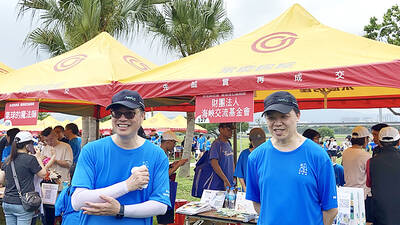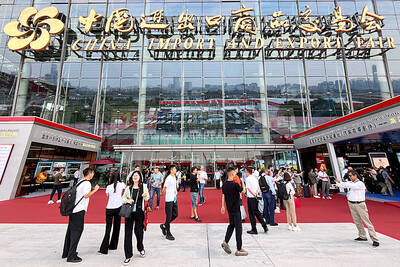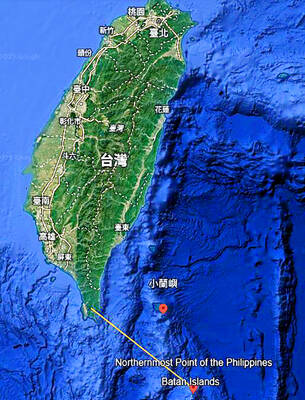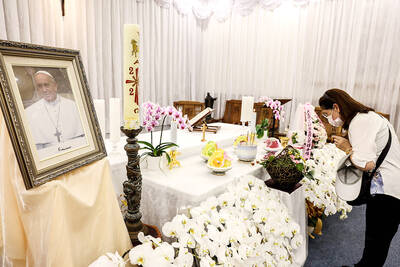United Parcel Service Inc (UPS), whose performance is a barometer of US commerce, may report the biggest decline in annual profit since 2001 as record fuel costs and a weak economy spur customers to choose cheaper shipping options.
Now is the time to invest, Manning & Napier Advisors Inc said.
“That’s when you want to buy stocks like this, when there’s pessimism,” said Robert Pickels, a senior analyst at Manning & Napier in Fairport, New York, which manages US$18 billion and has been purchasing shares. “It’s a great stock that’s on sale.”
UPS’ airline unit, which handles the most profitable overnight packages, likely experienced a 5 percent drop in second-quarter domestic volume after fuel surcharges reached 28 percent, said Jon Langenfeld, an analyst at Robert W. Baird & Co in Milwaukee.
Atlanta-based UPS blamed jet fuel and the weak economy when lowering its quarterly forecast by as much as 15 percent on June 23.
The company, which releases its results today, could report operating earnings of US$0.85 a share for the three months ended June 30, based on the average estimate of 14 analysts surveyed by Bloomberg.
To keep earnings from sinking faster, Bob Lekites, head of the UPS Airlines division since 1997, is wringing costs from the 264-jet fleet. He sold 17 older aircraft, is putting some weekend packages on trucks and spending US$3,000 per plane to wash engines on Boeing Co 767s to cut fuel use by as much as 5 percent.
Pilots are taking 14 minutes more to fly the 3,185km from Oakland, California, to the hub in Louisville, Kentucky. That saves 250,000 gallons (946,350 liters) of fuel a year, worth US$1 million, Lekites, 54, said in a telephone interview.
“Fuel is on everybody’s mind,” he said. Jet fuel has almost doubled to US$3.85 a gallon in the past year as crude oil reached a record US$147.27 a barrel July 11.”
“Fuel prices definitely are hindering UPS’s shares,” said Mike Morcos, a senior portfolio manager at Aurora, Illinois-based Old Second Wealth Management, which oversees US$1.4 billion, including a UPS stake. “It’s an opportunity to buy a great company with a five-year horizon at a very good entry point. We’re buying it.”
The parcel service may benefit in the coming year from Lekites’ cost savings and an agreement announced on May 28 to handle air shipments for Deutsche Post AG’s DHL unit, which UPS estimates is worth US$1 billion in annual revenue.
A new contract with the Teamsters union, which takes effect next month, will cut pension costs, increase scheduling flexibility and add to profit in 2010, UPS said in December. Air shipments in some markets in Asia and Europe are also posting gains of 10 percent or more, Lekites said.
CEO Scott Davis, 56, a 22-year veteran of UPS and former chief financial officer, succeeded Mike Eskew, 59, on Jan. 1. Since then the shares have fallen 14 percent to US$60.81 in New York Stock Exchange composite trading on Friday after reaching a five-year low of US$56.44 on July 15.
UPS may rise 25 percent to US$76 in the next 12 months, based on the average estimate from 11 analysts surveyed. Nine out of 19 who follow the stock recommend buying and 10 say hold. o hold.
The company is considered “a good indicator of the overall economy,” said Scott Brown, a senior economist at Raymond James & Associates in St Petersburg, Florida.

SECURITY: As China is ‘reshaping’ Hong Kong’s population, Taiwan must raise the eligibility threshold for applications from Hong Kongers, Chiu Chui-cheng said When Hong Kong and Macau citizens apply for residency in Taiwan, it would be under a new category that includes a “national security observation period,” Mainland Affairs Council (MAC) Minister Chiu Chui-cheng (邱垂正) said yesterday. President William Lai (賴清德) on March 13 announced 17 strategies to counter China’s aggression toward Taiwan, including incorporating national security considerations into the review process for residency applications from Hong Kong and Macau citizens. The situation in Hong Kong is constantly changing, Chiu said to media yesterday on the sidelines of the Taipei Technology Run hosted by the Taipei Neihu Technology Park Development Association. With

CARROT AND STICK: While unrelenting in its military threats, China attracted nearly 40,000 Taiwanese to over 400 business events last year Nearly 40,000 Taiwanese last year joined industry events in China, such as conferences and trade fairs, supported by the Chinese government, a study showed yesterday, as Beijing ramps up a charm offensive toward Taipei alongside military pressure. China has long taken a carrot-and-stick approach to Taiwan, threatening it with the prospect of military action while reaching out to those it believes are amenable to Beijing’s point of view. Taiwanese security officials are wary of what they see as Beijing’s influence campaigns to sway public opinion after Taipei and Beijing gradually resumed travel links halted by the COVID-19 pandemic, but the scale of

A US Marine Corps regiment equipped with Naval Strike Missiles (NSM) is set to participate in the upcoming Balikatan 25 exercise in the Luzon Strait, marking the system’s first-ever deployment in the Philippines. US and Philippine officials have separately confirmed that the Navy Marine Expeditionary Ship Interdiction System (NMESIS) — the mobile launch platform for the Naval Strike Missile — would take part in the joint exercise. The missiles are being deployed to “a strategic first island chain chokepoint” in the waters between Taiwan proper and the Philippines, US-based Naval News reported. “The Luzon Strait and Bashi Channel represent a critical access

Pope Francis is be laid to rest on Saturday after lying in state for three days in St Peter’s Basilica, where the faithful are expected to flock to pay their respects to history’s first Latin American pontiff. The cardinals met yesterday in the Vatican’s synod hall to chart the next steps before a conclave begins to choose Francis’ successor, as condolences poured in from around the world. According to current norms, the conclave must begin between May 5 and 10. The cardinals set the funeral for Saturday at 10am in St Peter’s Square, to be celebrated by the dean of the College